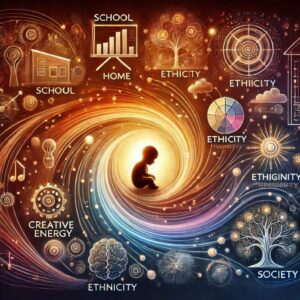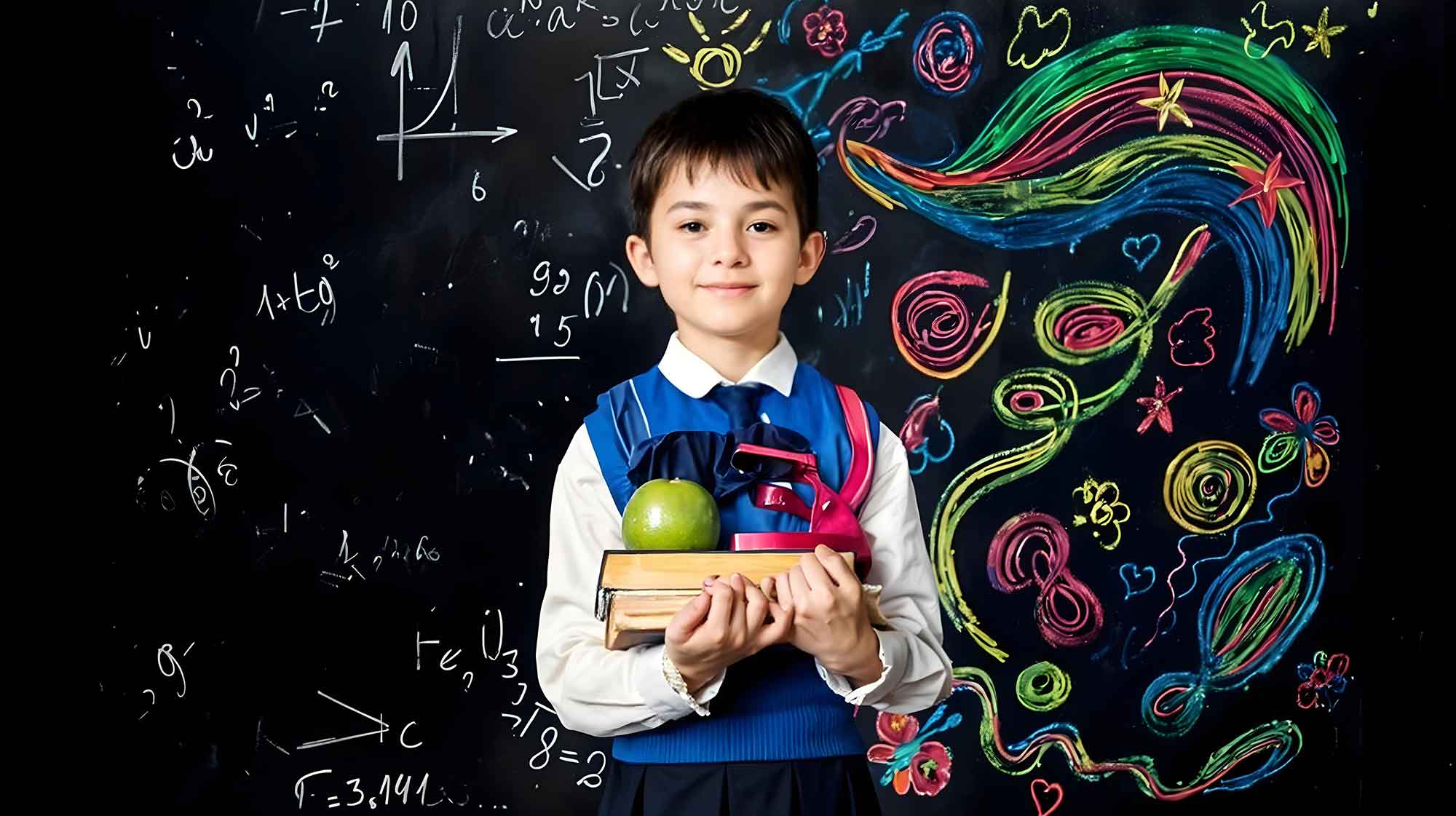I graduated from high School in the 90s , when there was no world-wide-web; infact most of our home computers didn’t even have an IP stack. Since then, technology has paced rather frantically to create a much-connected world; thereby inducing the potential to influence anyone across the globe with information, in a matter of minutes.
But still, our outlook towards creativity in human beings has not changed yet. The heart of our argument in this blog is the importance of cultivating the powers of creativity in education and everyday life.
“It is the supreme art of the teacher to awaken joy in creative expression and knowledge”
-Albert Einstein
Our Current System of Schooling:
Schooling today is like one of the natural orders of life; every child born goes through kindergarten plus 12 years of compulsory schooling. A concept developed out of the market demand created from industrialization; and became a mass model only in the last 100 years or so. In the early days, structured schooling was only for the wealthy and others invested their time in developing their skills in the craft that would earn them a living. Their lives were primarily in the countryside where the course of life was shaped by the seasons and very few lived or travelled to the city as part of trade.
All this changed, with the industrial revolution. A wave of migration started from the countryside to cities, for better wages and more job opportunities. From this evolved a new economic order and a community that aspired to make their children Managers, Doctors, Engineers, Financiers and Businessmen.
As the demand grew with industrial structures, we started setting systems in place for qualifying the labor force; thus, giving more importance to manual labor which had a compulsory elementary education and another small sector that completed secondary or higher education to fit for white collar jobs. In elementary we focused on number and literacy skills and for secondary or above it was an academic curriculum preparing students for administrative or professional occupations.
So, in essence; even though the fundamental purpose of our education is to help students learn ways to transform themselves for their future; reality is something else. For example, In our times, the demand for intellectual jobs has grown phenomenally and thus there is tremendous emphasis on STEM disciplines.
So, our educational system was designed and tweaked to cater for the needs of the industrial world. But the world population has quadrupled over the years and hence the necessity to open new fronts for employment and living is inevitable. Thus, this preoccupation with a form of education needs to change and we have to find new possibilities that would accommodate other abilities of human beings, perhaps other talents and interests which could open new avenues of opportunity for future generations.
Different Students Learn Different Disciplines at Different Paces:
Like the strict compliance system in the industrial world where linearity works well; the same doesn’t apply well in Education; because educating children age-appropriate alone is like we are grouping them only because they have the same birth year. Such groups of kids will have varied interests and different orientations to learning based on their natural traits and ecosystem.
So, the preoccupation with certain subjects and types of ability means that the students of other skills and interests are marginalized by the system itself, creating low self-esteem in them. Also, standard operating systems and strict compliance are essential in the industrial world, as they work on pre-designed products; but with people it’s different. Children are highly imaginative and creative; hence a culture of too much compliance in schools means a lot of these human capacities could be discouraged. Hence teaching should be subjective or learner-centered; focusing on their prior knowledge, to help them understand better and also tap into their unique interests which would excite or motivate them to learn.
Passion Drives Creative & Innovative Teaching:
“A passionate teacher, can awaken joy in their students and leave a positive impression that lasts a lifetime”
We want to teach Passionately; but what if passion is simply not there?
World over speakers in seminars, teachers retreats, and conferences, explain that teachers should bring passion into their work. And teachers want to help their students grow and succeed in all disciplines. So, even though the highly motivating speech from the speaker gets us all excited, the moment they leave the stage it all gets cold again; because we don’t know how to find our passion in teaching. As I mentioned in an earlier blog:- Flexibility in Teaching Styles; a teacher needs to inspire and excite the learner by wearing various hats a tutor, a person who facilitates the process of learning, an expert in a subject area, an examiner and a coach. So, it’s not just about finding that passion in teaching, it’s also about maintaining it across different roles.
Academicians who have invested years into improving the teaching process; have broken it down for us to become powerfully passionate teachers.
- Firstly, we need to be aware what is the content we are really passionate about when it comes to teaching. Is it History, literature or maths etc.?
- Secondly, we need to check, what is it about being a teacher that drives us?
For Ex: – Are we excited to help students who are not interested in coming to school; Are we passionate about motivating children to bring the best out of them; Are we passionate about helping our students to identify the skills and talents etc.? - Thirdly outside work, what are we passionate about? And how we can enable it in my teaching process. For ex: – If I’m passionate about music, I can incorporate that into my classroom.
- Fourthly, Are we flexible in all teaching roles? We need to have flexibility in teaching styles as we would have to wear different hats depending on what stage the learner would be. It’s not just about the content the teacher can feed and setting the examination. At least as teachers, we should be aware of this flexibility and help facilitate the role based on the status of the learner.
- Fifthly, do we have the process or system in place that would give us the necessary information about the learner; like the learning orientation, optimum learning space, interest, ecosystem etc.? If not, we need to have them to help us understand and transform the learner closely. These days EdTech companies like SchoolWizard are created primarily focused on achieving this.
Like they say, when you are passion-filled, you also become more personally fulfilled as an educator.
Misconception that only some are creative:
“My starting point is that everyone has huge creative capacities as a natural result of being a human being. The challenge is to develop them. A culture of creativity has to involve everybody, not just a select few. “
– Sir Ken Robinson
Just because we celebrate a few brilliant minds like Steve Jobs, Picasso, Albert Einstein etc; doesn’t mean the others are not creative. Our culture always divides people into creative and otherwise. This is because we attribute creativity only to a few disciplines like arts, design, carving, modelling, advertising etc. Creativity is possible in any discipline if it engages our minds immersively.
An optimum discovery journey for the creative side of a child requires attention in the following areas: –

| Ecosystem (School, Home, Ethnicity, Society) 🡪 Which generates varied interests in a child |
| Conducive environment 🡪 That helps acquire & groom skills necessary to express their talent. |
| Opportunities to assess performance🡪 Creative flow starts when they start imagining possibilities to perform better. |
| Process of developing or applying an original idea 🡪 Triggers Creativity or Creative energy flow in the child |
Restoring Creativity as a Priority in Education:
To teach creatively means to get the students more involved through effective and interesting approaches. It also means facilitating a learning space conducive enough for the learner to express confidently. We often hear children saying this subject is boring, and we hear the teacher saying the child is not interested. This is a paradox we need to address.
The biggest problem in education is the approach of conformity; where all students are standardized for operational efficiency. The concept of multi-dimensional learning or highly experiential learning plays a big part, provided we set the learning space conducive enough for the learner.
Educators today have started complaining that the structure of standardization in education, which the Government imposes in the interest of the economy, is stifling the creativity of both teachers and students alike. Most of the policies or reforms over the years have limited the discretion of teachers on what and how to teach.
“Those who have the ability to imagine new services and new opportunities and new ways to recruit work are the new untouchables. Those with the imagination to invent smarter ways to do old jobs, energy-saving ways to provide new services, new ways to attract old customers or new ways to combine existing technologies will thrive“
-Thomas Loren Friedman – Author (World is Flat)
We not only need a world where more educated kids graduate from school; we need a higher percentage of rightly educated kids. This is only possible if we realize, that human learning cannot just work being linear or standardized; on the contrary, it has to be diverse, organic and above all creative.
Exploring creative schooling is just beginning; don’t miss out on what’s next in Part 2…
Reference: – Teach like a Pirate – Dave Burgess; Experiential Learning – David Kolb; Out of Our Minds – Ken Robinson.

